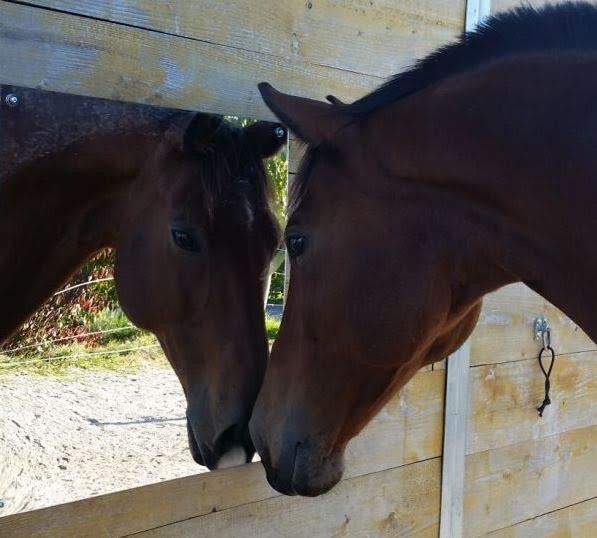
Are horses capable of mirror self-recognition?
Researchers first used Mirror Self-Recognition (MSR) to study the development of self-awareness in children, which coincides with other social-cognitive milestones such as empathy. In this test, a mark is discretely placed on the child’s forehead, cheek, or back, where it can only be seen in the mirror. Young children who have not yet developed MSR will often touch the mark on the reflection or look behind the mirror—perceiving the image to be another child—or they might ignore the mirror altogether. When children 2 years and older are tested, they typically adjust their position to get a better look at the mark on their own body, and might try to touch or remove it.
Baragli and his colleagues studied MSR in four horses. Researchers painted a cross on each horse’s cheeks using water-based gel; in the test, one mark was colored with yellow or blue powder, and the other was transparent to control for any reactions to the tactile properties of the gel. The horse was then placed in an enclosure with a large mirror. Each horse completed a series of five tests. The first two tests were to see the horse’s reaction to the mirror, and the final three tests were to see the horse’s reaction to the marks.
The horses in this study clearly reacted to the mirror image. They spent more time in front of it, explored it, and looked behind the mirror repeatedly. Whether the horses reacted to the colored mark was not as clear; two of the four horses scraped the mark more when it was colored than when it was transparent, but only on the left cheek. In general, the occurrence of cheek scraping was low and varied across horses.
The authors concluded that the horses’ actions did not match the complete expected behavioral steps to fit the mirror self-recognition paradigm. This pilot research of Mirror Self-Recognition in horses is one of a handful of recent studies of social cognition that go beyond looking at how horses interact with one another and to explore equine emotions and empathy.
Expert opinion by Aleksandra Dimitrova
The authors call for a replication of their research, but Mirror Self-Recognition might not be the best tool for studying self-awareness in horses, and other methods should be explored.
> From: Baragli et al., PLoS ONE 12 (2017) 1-6. All rights reserved to Baragli et al.. Click here for the online summary.


